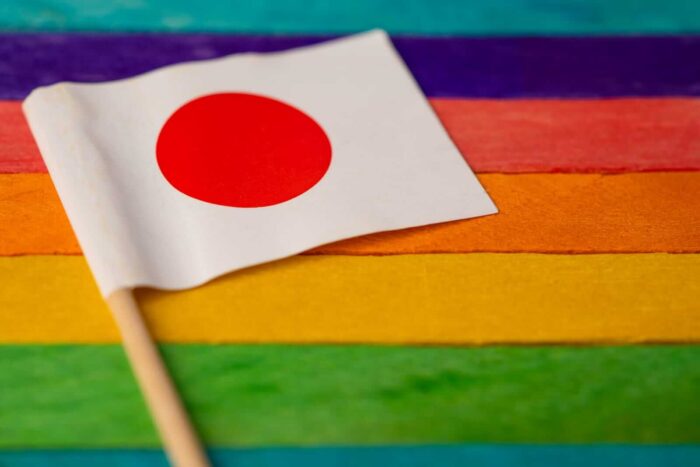
A movie with the same title as this article, starring Bill Murray and directed by Sofia Coppola, was a big hit in the U.S. and won an Academy Award for Best Original Screenplay. It’s the story of aging American actor Bob Harris, played by Murray, who is hired to be a pitchman for a Japanese whiskey brand, and journeys to Tokyo to be photographed for the ad campaign. The film follows his adventures while there, from bleary-eyed arrival to carrying out his business duties to exploring the city’s nightlife.
Anyone who has visited Japan will appreciate how well the film captures the disorientation of jet lag, and the feeling of other-worldliness when one doesn’t understand what the Japanese around you are doing or why. For me, however, the most compelling scene was the one that inspired the film’s title. (Warning: if you haven’t yet seen this movie and plan to in the future, you may want to stop reading here and set this article aside until after you’ve seen it, lest the following discussion spoil your enjoyment of this scene.)
In this scene, Bob is posing for a photo shoot holding the whiskey bottle. (If you’ve ridden the Tokyo subways you’ve probably seen this kind of celebrity ad which is so popular in Japan.) The Japanese camera crew is buzzing about, and Bob of course does not understand what they are saying. Finally, as the time to begin shooting nears, someone who appears to be the creative director gives a long poetic explanation in Japanese of the atmosphere he wants to invoke and how he wants Bob to pose – for example, this brand is an expensive one that requires a high-class atmosphere, and he should look at the camera “as if greeting an old friend.”
Clearly overwhelmed, the interpreter tells him merely to “look at the camera with intensity.” Suspicious at the contrast between the length of the Japanese explanation and the shortness of the English version, Bob repeatedly asks if there is anything else, and is told no. He does his best to strike an appropriate pose, but the creative director yells “CUT.” He expresses his annoyance at how Bob’s demeanor doesn’t match the effect he’s looking for and explains it again, and the interpreter gives another truncated rendering. Then Bob asks a simple question, whether he should look to the left or the right. The interpreter, clearly flustered, then asks the creative director this in a very wordy fashion. He loses patience and cuts her off. They try to have Bob pose again, and again “CUT” rings out. The scene ends here, but one gets the sense that it took a very, very long time to get the take that the creative director was looking for.
Cleverly, in this scene as well as the others, the director never adds subtitles, so the viewer is put in the shoes of Bob who is not able to understand everything that is going on around him. However, for me the scene was even more hilarious because I could understand the Japanese, and see just how far apart the original and the translation were.
I discuss this scene here because I often hear of this kind of situation from American clients who visit Japan on business. The translations they get are only a fraction of what they know was really said, and it feels like the most important parts were left out. The feeling is somewhat akin to driving in a deep fog – you have to make a lot of guesses and assumptions, and pray that you don’t go off the road or hit some invisible obstacle. Not the optimal environment for successful business discussions.
So what’s behind this kind of situation? Let’s analyze the scene in the movie. First of all, the woman assigned to interpret was obviously overwhelmed and out of her league. In fact, she may not have been a professional interpreter at all. More likely, she was an employee of the whiskey company who happened to speak English and was roped into this role. “Hey, speaking English is speaking English, why hire an expensive professional when someone in-house can handle it?” – it’s this kind of thinking that causes people to end up with someone in the interpreter’s position who is not qualified and ends up doing a poor job. Interpreting is a specialized skill, and requires experience to do well. Just being able to speak both languages does not mean that one will be a successful interpreter.
If you have the choice or opportunity, it’s best to bring your own interpreter along, or hire one yourself. It’s expensive, but it can mean the difference between a successful visit and an entire afternoon spent with someone yelling “CUT!” If you don’t have a choice and do get stuck with a non-professional, at least show them some understanding – they probably aren’t too thrilled with the situation themselves!
The second problem in this scene was lack of preparation. When the interpreter heard the creative director’s explanation, it was clearly for the first time. If she had been given some information about the topics she was going to be interpreting ahead of time, she would have been better prepared and would not have become so overwhelmed.
The third problem was the long length of the creative director’s explanation. He went on and on and said all he wanted to say without pausing to let the interpreter catch up. An interpreter is only human, and there is only so much information they can hold in short-term memory at one time. If you don’t stop every so often and give them a chance to catch up, it’s inevitable that some of the details will get lost. In this case, there was just so much all at once that apparently the interpreter got buried and simply gave up trying to convey it all.
The last problem evident in this scene was a lack of patience. The creative director quickly became frustrated when the interpreter did not magically convey every nuance. When she was relaying Bob’s question, he rudely cut her off. This kind of pressured atmosphere only made the interpreter more nervous and made matters worse. When working with an interpreter, one needs to assume that everything will take at least twice as long as usual. Being in a rush doesn’t work. If you don’t want things to get lost in translation, you need to leave enough time for the translation process.
For theater lovers, the David Henry Hwang play Chinglish has a similar theme of translation issues, in this case between Americans and Chinese. There are several meeting scenes in which the Chinese is projected as subtitles, showing the often hilarious difference between what was intended and what got translated. Highly recommended.
Related articles
11. Bon Appétit 【Column: Leap Before You Look】
“What do you miss the most about Japan?” My answer to this よくある質問 (frequently asked question)
Navigating Personal Questions in Japan as an Openly Gay Business Traveler
With more businesspeople visiting Japan recently, I’ve had the same question come up from more than
10. What a Difference a Vowel Makes 【Column: Leap Before You Look】
Have you noticed when posing for photos, Japanese people often strike the “peace” sign, also known a




